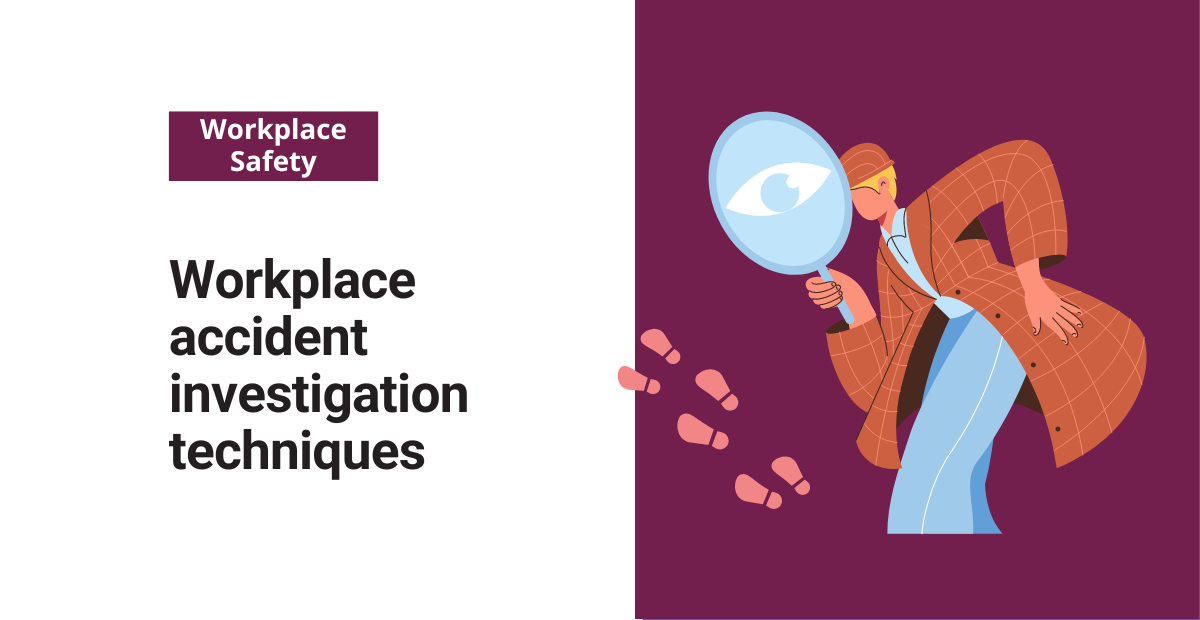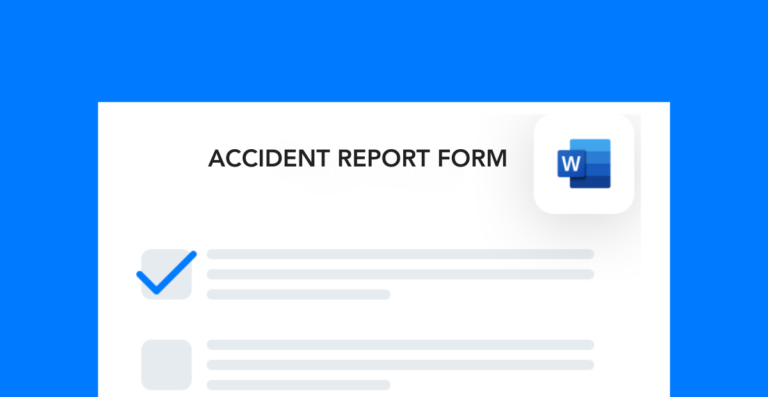When safety incidents occur, you might feel overwhelmed trying to find the root cause. But if you adopt these workplace accident investigation techniques, you can standardize how you approach investigations.
Why should you perform an investigation?
An accident is an unexpected event that disrupts an activity’s completion, typically resulting in human injury or property damage. Accidents should be investigated:
- To determine the root cause to prevent future accidents
- To satisfy any legal and regulatory requirements
- To determine the cost of the accident
- To determine compliance with safety regulations
- To provide insurance companies with information about the accident
When companies investigate accidents, they find the root cause and implement corrective actions to prevent the incident from occurring again. Implementing corrective actions ensures that the employees are safe from recognized hazards. When companies prevent accidents from occurring, worker’s compensation insurance premiums decrease, thereby increasing profits.
What should an accident report include?
Accident reports should go into detail about:
- Who was injured in the accident
- What specifically happened
- Where the accident occurred
- When the accident occurred
- Why the accident occurred
- How did the accident occur
The most important aspect of investigating accidents is finding the root cause. The root cause is the most fundamental reason why an accident occurred. Finding the root cause requires special skills through training or experience.
The safety and health professional should always be involved in the accident investigation by playing a leadership role in gathering and analyzing the facts to develop recommendations. If the injury is minor, the injured worker’s supervisor can conduct the investigation.
However, the safety and health professional should study the accident report and consult regarding corrective action recommendations. If the injury is serious, a safety and health professional should investigate with help from others such as the supervisor and employees with knowledge of the work in question. An investigative team may be necessary.
When should an employer investigate an accident?
Immediate investigations produce more accurate information because the employees and witnesses are more likely to remember details. The longer an investigator waits, the essential facts may be forgotten as memories fade. The accident investigation should start as soon as the employee is cared for.
As well as gathering detailed information about the accident, an immediate investigation is evidence of management’s commitment to preventing future accidents. An immediate action shows that management cares about their employees by determining what happened and preventing other employees from being injured.
What should employers investigate?
Your investigation should follow the who, what, where, when, why, and how. The purpose of the investigation is to collect facts, not to find fault! Do not label others or place blame.
Find the facts of the accident before reaching any conclusions. The causes of the accident should be the primary focus. If a worker made a mistake or breached a procedure, it is a fact, not a fault.
Accident investigation questions
Below are some examples of questions that you should ask when attempting to find the facts and identify causes:
- What was the specific task that the injured employee was doing?
- Was the injured person trained in the task?
- Was the injured person authorized to use the equipment?
- Are there any established safety rules or procedures that were not followed?
- Was the injured person new to the job?
Process the scene
What are some workplace accident investigation techniques? The employer should first isolate the accident scene. The purpose of isolating the accident scene is to maintain as closely as possible the conditions present at the time of the accident.
Isolating the scene involves first bringing the situation under control and caring for the injured worker. Then, secure the area and isolate the accident scene to ensure that it is safe for investigators. Once you’ve done that, collect information and facts before the accident scene changes.
Collect and record all the evidence
Next, the investigator should make a permanent record of all evidence. The longer the accident scene is isolated, the more likely it is that evidence is disturbed. If the isolated scene contains a critical piece of equipment, there will be pressure to get it back into operation by upper management. Therefore, you should collect evidence immediately.
Record evidence by writing notes, drawing sketches or diagrams, or taking photos or videos. When taking photos or videos, be sure to place a familiar object in the picture, such as a ruler, coin, or a photographer’s finger. The added object helps viewers gain the right perspective on the subject of the photograph.
Find witnesses and interview them
The next step is to compile a witness list. You should interview each witness individually and separately from other witnesses to prevent statements from changing. Interview the witnesses immediately after making your list. The investigator may need to reinterview the witnesses for clarification. When asking open-ended questions to gather facts, be sure to listen.
The investigator should only interrupt if it is necessary to receive clarification. Do not influence the witness with gestures or facial expressions. It is important to stay neutral and non-judgmental.
Follow up on loose ends
Last, the investigator should follow up with the accident investigation. Follow up steps include:
- Writing the accident report and finding the root cause;
- Developing a plan for the corrective actions;
- Implementing the corrective action plan;
- Monitoring and evaluating the effectiveness of the corrective actions;
- Adjusting as necessary to ensure the cause of the accident has been eliminated; and
- Incorporating changes into standard operating procedures for continual improvement of the workplace
Implement these workplace accident investigation techniques to prevent future incidents and find great opportunities for improvement.
Other posts you might like…
No posts

